Okay, now that I am back from my five-day trip to Vienna (blog to come!) I can finally continue to play blog entry catch up.
On Friday September 30th, I traveled to northern Hessen (a centrally-located state in Germany) to visit some friends for the long weekend, as Monday, October 3rd is a national holiday in Germany (Day of German Reunification.) As a high school student, I had the opportunity to travel to both Germany and northern Italy with my German class during the spring of my junior year in 2008. Since then, I have remained good friends with my host family (the Stübers).
I began my travels with the train from Tübingen to Stuttgart, and then by car with a perfect stranger from Stuttgart to Fulda, from which point I continued with the train to Eschwege. In Germany, there is a website called “Mitfahrgelegenheit” (literally, “Opportunity to ride along”) where people can post trips they are making by car, and how much space they have for others to ride along and split the cost of gas. It is somewhat similar to the “Rideshare” board back at VU, and in other ways it is essentially glorified hitchhiking. It is, however, significantly cheaper than taking the train, and although I had my qualms about it at first, it turned out to be a very nice way to travel. There were three of us riding along plus the driver, so it was a very cramped ride in the back seat of a tiny BMW, but everyone was very nice and it was an excellent opportunity to practice my German as well. In the United States, I think many people would see the concept of “Mitfahrgelegenheit” as dangerous, or untrustworthy. In Germany, where the conservation of resources and money is a high cultural priority, it is seen as a way to be less wasteful and to save time and money. Before picking up the other two passengers, I talked for awhile with the driver about Mitfahrgelegenheit in respect to the culture of Germany, and why many Americans would be weary about trusting someone they didn’t know to drive them somewhere. He told me an interesting story about an American friend of his, who was under the impression that Germany was a dangerous place because people were not allowed to carry guns and defend themselves if necessary. We both had a good laugh about that one…
Anyway, the weekend of September 30th was an especially eventful one in the Stübers little town near Eschwege, because it happened to be the weekend of their annual “Kirmes” festival. Jonas, my high school exchange partner, was one of the event organizers this year, so both he and his family were kept very busy putting on the festival.
Every night there was a different themed dance party in a giant beer tent, and during the day there were parades, bumper cars, carnival-type games, and other festivities. I arrived late on Friday – shortly before midnight – but after unpacking all of my things, I was dropped off at the tent where we proceeded to partake in the Kirmes revelry until 4:30 AM. It took almost eight hours to get from Tübingen to Eschwege, mostly due to an obscenely long traffic jam on the Autobahn, so I was already exhausted at midnight. Needless to say, but 4:30 I was quite ready for bed.
The disco parties every night where pretty similar, with the exception of the music, which changed. Friday night was a mix of everything, Saturday night was more traditional German music, and Sunday night featured a live band playing “Oldies” music from both Germany and the United States, among other countries. I was introduced to so many people I could barely keep up with what was happening as I tried to dance along to music I had never heard before. As someone who does not speak German as a native language, it is enough of a mental workout for me to understand everything that’s going on in normal conversation. The music was so loud that most of the time I could barely hear well enough to struggle through the task of comprehending what was being said to me, so I did a lot of nodding and smiling. It’s amazing what you can tell just by a person’s facial expressions, even if you can’t hear or understand them.
The thing that shocked everyone I was introduced to most was not that an American had come to attend a beerfest in a town of 700 people, but that I could not actually drink the beer; I’m gluten intolerant. Many people after meeting me and talking with me for awhile would abruptly interrupt the conversation to ask if I would like a drink. And not just any drink, but a beer. Before they would disappear into the enormous crowd, I would have to explain that although I would love something to drink, that I was allergic to wheat and couldn’t drink beer. “You can’t drink beer?!?” they would ask. “Then what can you drink?” At first, I didn’t know myself what was on the menu, so I would just say, “I’m not sure… What other things do they serve here?” After a few long minutes of thought, my friend Daisy answered, “Whiskey cola!” So, from that point onward, I was brought many whiskey colas. It was as if some mad bartender kept mixing them up just for me, and sending them out to the dance floor on a long conveyor belt, from which everyone then grabbed a drink to offer to the Stübers’ American friend. At one point I had three whiskey colas to finish…
The Kirmes festivities also included two parades, both of which I was asked to participate in. The first parade was a Torch Parade, or, “Fackelumzug.” All the adults carried torches (with giant, dangerous, blazing flames) and the kids all carried battery-operated lanterns to prevent the town from burning to the ground. Daisy and Jonas’ seven-year-old sister could barely contain her excitement for the entire day leading up to the torch parade – she was so excited to walk through the town with me and to carry her lantern. I am quite certain that I was introduced to every child in the entire town as, “Zach, mein Freund aus Amerika!” (Zach, my friend from America.)
My second Kirmes parade experience was without a giant torch, but I did get to wear a chef hat and carry a banner! My friend Daisy plays on a women’s soccer team comprised of two neighboring towns, and a couple of the players from her team got together to walk in the parade. The coach dressed up like a chef, and I helped carry one of two banners with phrases that fit the cooking theme. Daisy’s little sister took on the role of throwing candy to the children watching the parade from the sidewalk. I found this to be a little funny, because the streets were so narrow that “throwing” the candy really wasn’t necessary as it is in parades back home. All she had to do was drop it on the ground next to the curb, or maybe toss it just a little bit.
After sleeping in a little bit on Monday, I was back to the train station to make the long trip back to Tübingen via train and Mitfahrgelegenheit. All in all, my weekend with the Stübers / at the Kirmes festival was a lot of fun, and I really enjoyed comparing their “small town festival” to those back home. There were more similarities that I would have imagined.
Since I was caught up on my blogging, I have also been on two field trips to nearby Stuttgart, the capital of Baden-Württemberg. The first time was with my German course, and consisted of seeing the Mercedes-Benz museum, and then watching an Opera – La Traviata. The Mercedes-Benz Museum was excellent, and as a car enthusiast, I enjoyed myself very much. Even for those who aren’t all that car-crazy, I still think it would be a really fun museum to visit. For example, there is a “Room of Celebrities” exhibit that features Princess Diana’s Mercedes-Benz sports car as well as a Popemobile. The architecture of the building is great, both exterior and interior. Once inside, everyone receives an audio guide, and is taken to the top floor via elevator, where you arrive in a room with just a model of a horse in the middle to represent the age before cars were invented. Shortly after comes the exhibit about the first cars ever invented. After this point, the museum splits into two downward intertwining spiral directions – one featuring more technical exhibits, and the other featuring more historical exhibits. I made sure I saw both sides before descending to the floor below! Although I’m not a big opera fan, La Traviata was interesting to see and hear. (I was actually able to see Die Zauberflöte in Vienna a few days ago, which was really cool, so maybe my opinion on Operas has changed? More to come on that soon! At any rate, La Traviata wasn’t my favorite.)
The second field trip to Stuttgart was to visit the Canstatter Wasen – the world’s second largest “Beerfest” after Oktoberfest in Munich. The Canstatter Wasen is not as well known because unlike Oktoberfest, it’s not a tourist destination. I was completely blown away by how large it was. The only thing I could compare it to would be the Wisconsin Sate Fair – complete with rides, roller coaters, carnival games, stores, and giant beer “tents.” Valpo’s connections with nearby Reutlingen University enabled us Tübingen students to get tickets to go along, as obtaining seats in the giant portable buildings they call “tents” can be difficult. Seeing the beerfest was an interesting experience, but it is not one that I need to repeat. Everyone from Valpo was given one coupon for food, and two coupons for beer – each coupon was redeemable for 1 “Mass” of beer, a giant mug filled with nearly two liters of beer. Because I can’t drink beer, standing on a table dancing among thousands of people holding giant mugs filled with two liters of beer while singing, dancing, spilling on you, blocking every imaginable exit, and being completely obnoxious wasn’t exactly enjoyable for me. I am sure that if I were also able to drink a two-liter mug of beer that my experiences would have been much different! All of the beer drinkers loved it. I however, had to pay almost €10 for carbonated apple juice. I would also like to point out that contrary to common belief, the German’s don’t actually walk around in public wearing lederhosen. Except for at beerfests, which are lederhosen extravaganzas. (The lederhosen-wearing, giant beer-drinking stereotype of Germans is largely untrue most every part of the year, except for beerfests such as the Canstatter Wasen.)
That’s all for this blog post! I’ll try to get my Vienna experiences up as soon as possible!
Bis Dann
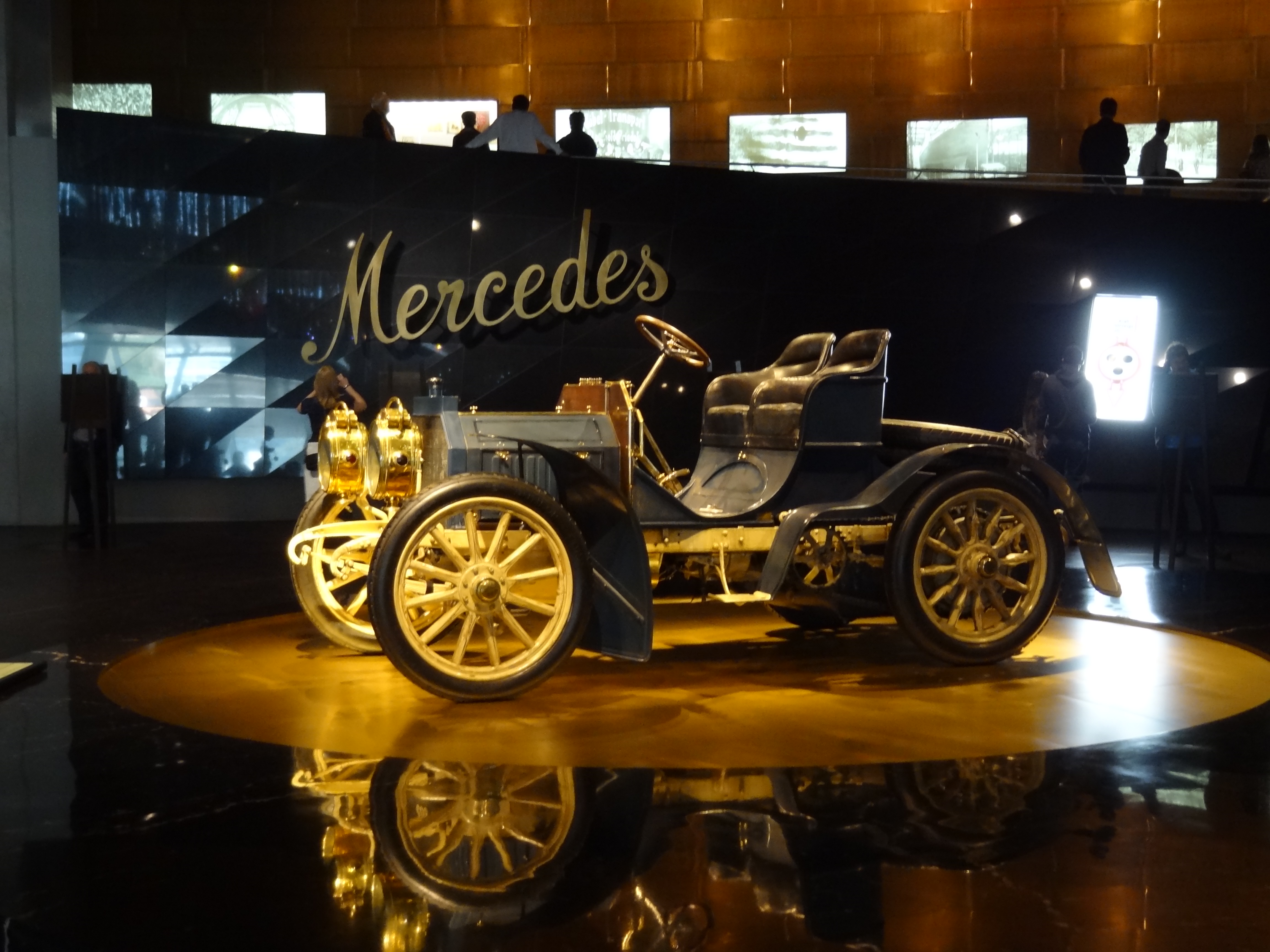
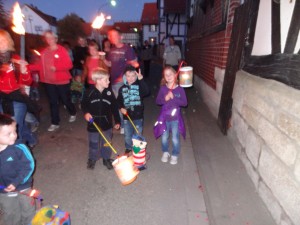
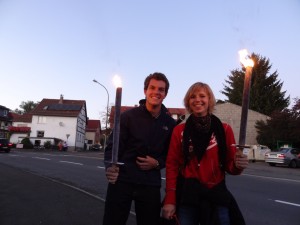
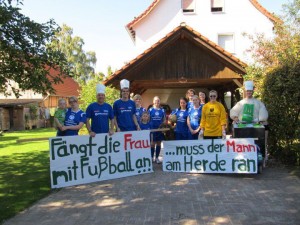
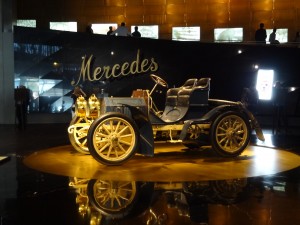
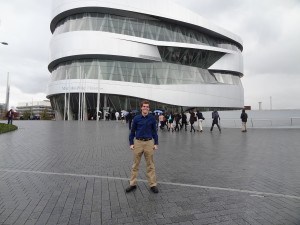
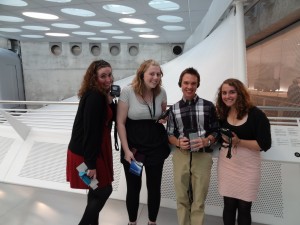


Leave a Reply